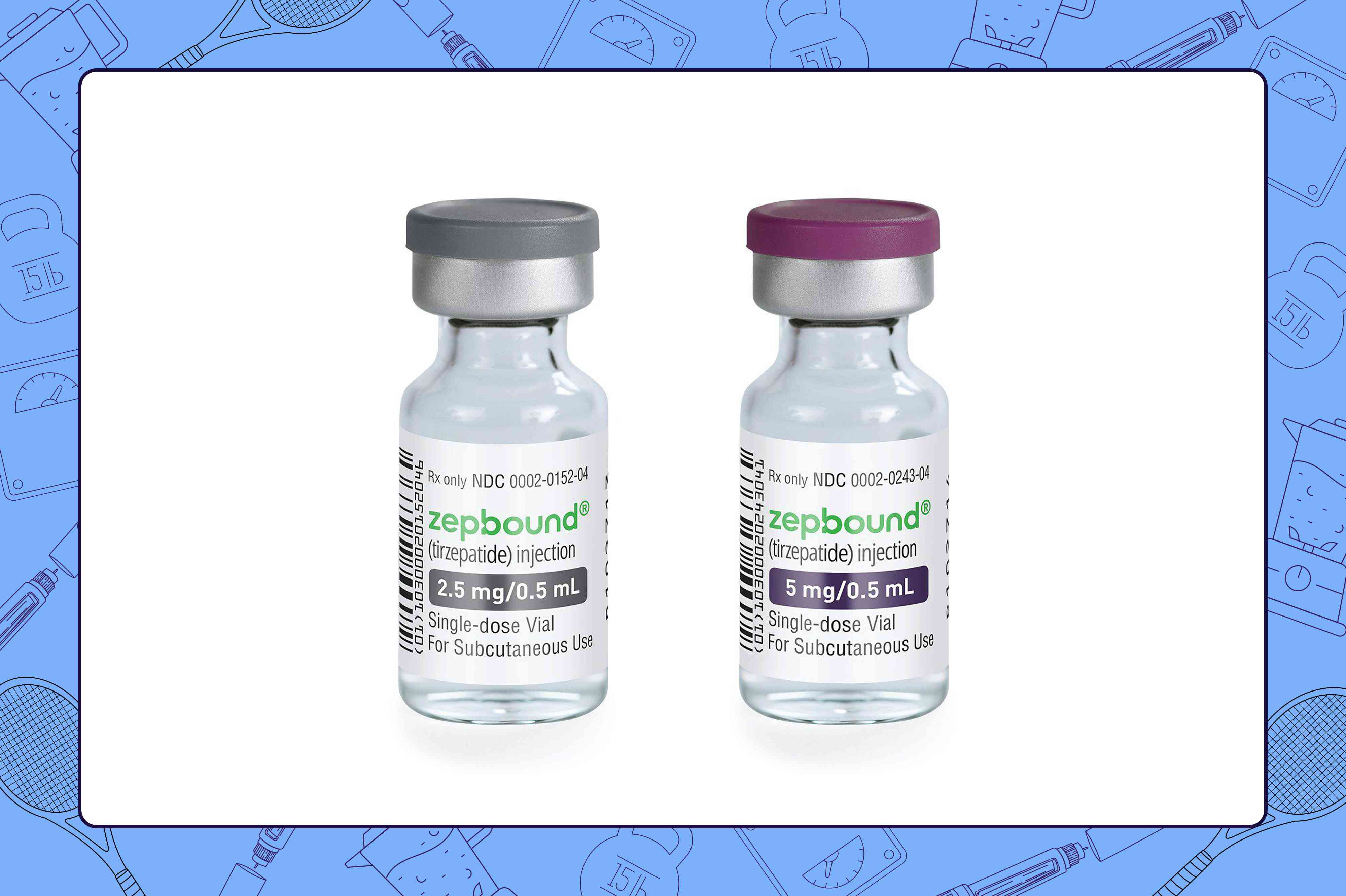Zepbound Is Now Available in Additional Doses at Lower Costs

Eli Lilly has reduced the prices of certain Zepbound vials and introduced higher-dose options, making the weight-loss drug more accessible for some patients

Design by Health / Photo by Eli Lilly
- Eli Lilly has reduced the prices of certain Zepbound vials and introduced higher-dose options, making the weight-loss drug more accessible for some patients.
- While these changes may help some patients who lack insurance coverage, experts argue that the cost of GLP-1 medications remains prohibitively high for many.
- The move positions Lilly as a competitive alternative to compounded weight-loss drugs, especially as the FDA cracks down on off-brand versions.
Eli Lilly announced in a press release last week that it has reduced the prices of vials of its popular anti-obesity drug Zepbound and introduced new dosage options.
The company is now offering 7.5 mg and 10 mg vials, higher doses than it's offered since launching Zepbound vials in August. It’s also slashing the cost of 2 mg and 5 mg vials by $50 a month.
Like all of its Zepbound vials, the new dosages are available for eligible people who pay out of pocket through LillyDirect, the company’s direct-to-consumer website. To use the vials, people have to draw out the medicine with a syringe and inject themselves with a needle.
Before launching the Zepbound vials in 2024, Eli Lilly offered the drug only in a single-dose injector pen, used once weekly, in doses ranging from 2.5 mg to 15 mg.
“We launched the vials last year to help more people living with obesity manage this chronic condition, and many patients found success with Zepbound vials,” Rhonda Pacheco, Group Vice President of U.S. Cardiometabolic Health at Eli Lilly and Company, told Health. “They appreciated that the self-pay option allows for full transparency on the price and quality of their medicine, so we decided to launch the higher doses for those who needed them to continue their weight loss journey.”
Here’s what you need to know about the vials' cost, who can use them, and what experts think of the news.
Who Is Eligible for the Vials?
Anyone with a valid, on-label electronic prescription for Zepbound from a healthcare provider of their choice is eligible, Pacheco said.
Zepbound, a brand-name version of tirzepatide, is part of a class of medications called glucagon-like peptide 1 (GLP-1) agonists.
In 2023, the Food and Drug Administration approved it for weight loss in adults with a body mass index over 30 or for those with a BMI of 27 and at least one weight-related condition, such as high blood pressure or high cholesterol. In 2024, the FDA also green-lit it to treat moderate to severe sleep apnea.
How Much Do the Vials Cost Now?
A four-week supply of a 2.5 mg single-dose vial now costs $349 monthly, down from $399. The 5 mg dose is $499, compared to $549 previously.
The new 7.5 mg and 10 mg vials cost $499 per month at first and for refills occurring within 45 days of the last delivery. Otherwise, the cost jumps to $599 for a 7.5 mg vial and $699 for a 10 mg one.
The higher-dose vials are cheaper than similarly dosed injector pens, which cost about $1,000 a month before insurance and are more expensive to make.
Who Will Benefit From These Changes?
Many insurance companies deny coverage for weight loss drugs, often because obesity is “misclassified as a lifestyle choice,” Pacheco said.
Scott Isaacs, MD, president of the American Association of Clinical Endocrinology, said Eli Lilly is making Zepbound more accessible to a broader range of patients by lowering prices and offering more dosage options.
“This puts it into the realm of affordability for some people who don’t have coverage but have strong clinical indications and expected benefit,” agreed Karl Nadolsky, DO, a clinical endocrinologist, obesity specialist, and clinical assistant professor of medicine at Michigan State University College of Human Medicine.
Isaacs said the changes may help Eli Lilly compete with compounded weight loss drugs, which have been riddled with safety concerns but are nonetheless relied on for their relative affordability and accessibility. It’s legal for pharmacies to offer compounded drugs, which aren’t FDA-approved, when an approved drug cannot meet a person’s medical needs or there’s a shortage of FDA-approved medications.
But many people have lost—or soon will lose—access to compounded drugs. In December, the FDA removed tirzepatide, the active ingredient in Zepbound, from the shortage list. Many compounders had to stop producing weight-loss drugs “that are essentially a copy of” tirzepatide in the name of meeting demand. In late February, the FDA delisted semaglutide, sold under the brand names Ozempic and Wegovy. Compounding pharmacies have 60 or 90 days left to offer off-brand versions.
People who can no longer buy compounded semaglutide may turn to Eli Lilly’s cheaper Zepbound vials as an alternative, but Pacheco said the news didn’t factor into Eli Lilly’s decision. “Our goal is to help patients achieve their health goals and remove systemic barriers where we can,” she said.
Accessibility Issues Remain
Even with the reduced price of Zepbound vials, Isaacs said the cost of GLP-1 medications is still too high. “The prices of Zepbound vials remain unaffordable for the majority of people who do not have insurance coverage,” he said.
Nadolsky said more changes are needed to make weight loss drugs widely accessible. “There needs to be some obvious changes in the United States regarding branded drug prices,” he said, involving the operation of everything from insurance companies to pharmacies to large pharmaceutical companies.
Edited by Health with a background in health, science, and investigative reporting. Previously, she wrote full time about parenting issues for the app Parent Lab. Before that, she worked as a reporter for National Geographic covering wildlife crime and exploitation." tabindex="0" data-inline-tooltip="true"> Jani HallThis story originally appeared on: Health News - Author:Cathy Cassata


















